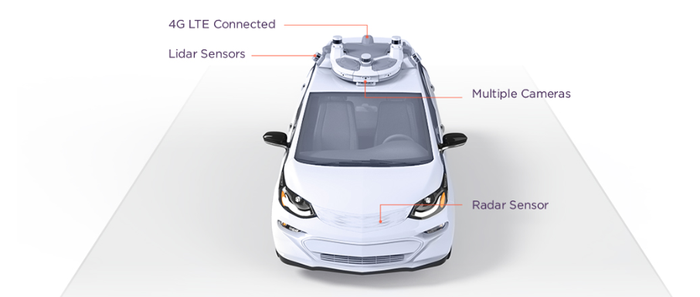Softbank drives forward Vision Fund with $2.25bn GM autonomous vehicle investment
General Motors has become the latest business to catch the attention of Masayoshi Son’s SoftBank Vision Fund, as its autonomous vehicles subsidiary, Cruise, receives a $2.25 billion boost.
June 1, 2018

General Motors has become the latest business to catch the attention of Masayoshi Son’s SoftBank Vision Fund, as its autonomous vehicles subsidiary, Cruise, receives a $2.25 billion boost.
The cash will be invested into Cruise in two tranches. At the closing of the transaction, the Vision Fund will invest $900 million, alongside $1.1 billion from parent-company GM, while the remaining $1.35 billion will be invested at the point Cruise’s technology is ready for commercial deployment, this being forecast for early-2019. The total investment will see the Vision Fund holding a 19.6% stake in Cruise.
“Our Cruise and GM teams together have made tremendous progress over the last two years,” said GM CEO Mary Barra. “Teaming up with SoftBank adds an additional strong partner as we pursue our vision of zero crashes, zero emissions and zero congestion.”
“GM has made significant progress toward realizing the dream of completely automated driving to dramatically reduce fatalities, emissions and congestion,” said Michael Ronen, Managing Partner of SoftBank Investment Advisers. “The GM Cruise approach of a fully integrated hardware and software stack gives it a unique competitive advantage. We are very impressed by the advances made by the Cruise and GM teams, and are thrilled to help them lead a historic transformation of the automobile industry.”
The Cruise business was initially founded in 2013, before entering Y Combinator in 2014 to perfect the business model and vision. GM bought Cruise in March 2016 for $581 million to bolster the software capabilities of the automotive giant and accelerate GM’s development of autonomous vehicle technology. Since that point the team has seemingly been making steady progress after largely been left to its own devices by GM, focusing on Level 4 and 5 vehicles in California, Arizona, and Michigan. Back in January, GM filed a Safety Petition with the Department of Transportation for its fourth-generation self-driving Cruise AV, which it claims is first production-ready vehicle able to operate without a driver, steering wheel, pedals or manual controls. The petition stated GM wanted to deploy vehicles in 2019.
While there have unsurprisingly been no updates from the Department of Transport, GM and Cruise are confident the vehicles will meet the standards set. So confident are the team that Cruise CEO Kyle Vogt wrote an article on Medium in September stating the third-generation vehicles would meet the requirements to operate autonomously.
“The car we’re unveiling today is actually our 3rd generation self-driving car, but it’s the first that meets the redundancy and safety requirements we believe are necessary to operate without a driver,” Vogt wrote. “There’s no other car like this in existence. In a few weeks, these cars will be a part of the fleet that carries Cruise employees anywhere in San Francisco using our app. For now, there will still be a human behind the wheel.”

Vogt is confident in the progress of the business, and it actually pointing to the hardware, not the software, as one of the biggest complications. Of course developing an intelligent system which can interact with and react in real-time to the environment is certainly a complicated task, though the hardware has to be completely redesigned to be suitable for autonomous driving. According to Vogt, retrofitting existing vehicles is not a feasible solution, though some sceptics might point out this is a very convenient claim for the automotive manufacturers.
The GM acquisition has certainly added capital into the Cruise business, joint investments have allowed the workforce to expand by 1,100 over this period, however the seemingly bottomless bank account of competitors is stealing column inches. Google’s Waymo is one project which benefits from such a luxurious financial position, hitting the headlines for the right reasons, and occasionally the wrong ones. Last October, Waymo gained attention for making progress, but admitting its vehicles were unable to turn left.
Combining the steady GM progress, Vogt’s leadership (he did build his first ‘self-driving’ vehicle at 14 using a webcam, computer vision, and a power window motor), friendly faces in the rest of the Vision Fund portfolio and an extra $3.35 billion of capital certainly puts Cruise in a promising position in the autonomous race.
About the Author
You May Also Like












_1.jpg?width=300&auto=webp&quality=80&disable=upscale)
